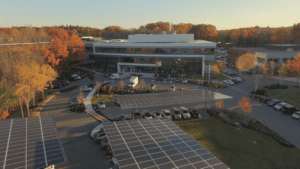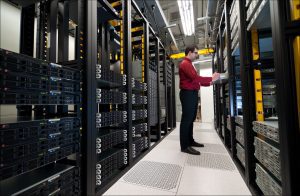Healthcare providers have always been concerned about resiliency and preparedness for when disaster strikes and technology disrupts. But the global pandemic has created some unprecedented challenges that have providers rethinking what resiliency means in a hospital environment and how to achieve it.
Michael Wood, VP of Planning, Design and Construction with the US healthcare facilities service provider Medxcel recently discussed his approach with me. Michael’s company is responsible for more than 160 acute care sites spread across 29 states, so he has had to deal with the pandemic on a scale that few facilities managers would envy. But Michael has the experience to take on the challenge, having been in the field for some 35 years.
What hospital resiliency means during a pandemic
The pandemic is different from previous threats to resiliency because of its breadth. Rather than impacting just one area or community, it is truly global in scale. “We’d have one town or state where things were spiking and another was at a very low point,” Michael told me. “It would change over a matter of hours or days.”
To get a handle on which sites were adequately prepared, Medxcel set up a national command center along with multiple regional centers through its 29-state footprint. The groups compared data and came up with a new definition of what resiliency means in the face of a pandemic.
At its base, he says resiliency means ensuring a continuance of operations, and in a proactive vs. reactive way. But Medxcel also decided to combine that with environmental stewardship, to ensure the best use of resources.
The company decided to focus on three areas of equal priority.
First is bringing the right resources to each facility – such as electrical power, water, and gas – so it can continue operations in a safe environment for patients and caregivers alike.
Second is providing flexibility in terms of hospital spaces. As we all saw early on in the pandemic, many hospitals had to adapt on the fly to accommodate a massive influx of patients, so flexibility is key. Beyond simply finding space, however, Michael pointed out flexibility also means changing the use of spaces and adapting mechanical systems to protect frontline care workers and other patients. The ability to change the pressure in a given room from positive to negative, for example, helps isolate the spread of infection, making the hospital safer for staff and other patients.
The third focus area for Medxcel is ensuring systems, such as HVAC and power, are ready to meet the demands the pandemic presents. Michael says he’s become much more focused on using digital technologies including Internet of Things (IoT) to monitor and optimize such systems.
That has helped him become more proactive in dealing with any issues. For example, previously if a facilities manager heard that a compressor didn’t sound quite right, he’d go physically check various dials and gauges to try to troubleshoot the problem.
“We can digitize that,” Michael told me. “We can use IoT to visualize those things with optical cameras, microphones, vibration sensors, all sorts of devices that can save us footsteps.” The digital tools also provide analytics that enable a far more proactive approach to maintenance than in the past, he said.
EcoStruxure™ for Healthcare
What’s behind all this is EcoStruxure for Healthcare, which enables hospitals to build a digital infrastructure that ties various systems together. It supports hospitals in their ability to adjust to the new normal that the pandemic has thrust upon them and ensure their environments are resilient and efficient.
This message was part of our Innovation Summit World Tour 2020. Making 11 virtual stops around the world, we welcomed over 20,000 customers, partners and students through the virtual doors and into the discussion on how we can build a more resilient and sustainable future together.
If you want to discover more from the event, we invite you to read the following articles:
- Building Resilient and Sustainable Data Centers
- How digitization helps deliver healthier hotels–and happier guests
- Hospital resiliency during a pandemic—Expert Insights
- Expert Insights: Smart Building Technology Drives A Safer Workplace
- Benefits from the Promise of Next Generation Industrial Automation
- Securing the IT-OT Convergence for Cybersecurity Solutions
- Cracking Digital for An End-to-End Traceability Journey
- 5 ways IEC 61499 is liberating Industrial Automation
- 3 Ways Smart Machine Lifecycle Digital Solutions Bolster Industrial Plant Flexibility
- Two technologies available today to resolve climate change



